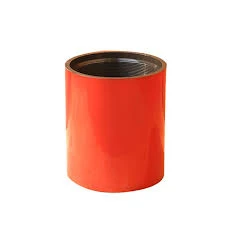- Afrikaans
- Albanian
- Amharic
- Arabic
- Armenian
- Azerbaijani
- Basque
- Belarusian
- Bengali
- Bosnian
- Bulgarian
- Catalan
- Cebuano
- Corsican
- Croatian
- Czech
- Danish
- Dutch
- English
- Esperanto
- Estonian
- Finnish
- French
- Frisian
- Galician
- Georgian
- German
- Greek
- Gujarati
- Haitian Creole
- hausa
- hawaiian
- Hebrew
- Hindi
- Miao
- Hungarian
- Icelandic
- igbo
- Indonesian
- irish
- Italian
- Japanese
- Javanese
- Kannada
- kazakh
- Khmer
- Rwandese
- Korean
- Kurdish
- Kyrgyz
- Lao
- Latin
- Latvian
- Lithuanian
- Luxembourgish
- Macedonian
- Malgashi
- Malay
- Malayalam
- Maltese
- Maori
- Marathi
- Mongolian
- Myanmar
- Nepali
- Norwegian
- Norwegian
- Occitan
- Pashto
- Persian
- Polish
- Portuguese
- Punjabi
- Romanian
- Russian
- Samoan
- Scottish Gaelic
- Serbian
- Sesotho
- Shona
- Sindhi
- Sinhala
- Slovak
- Slovenian
- Somali
- Spanish
- Sundanese
- Swahili
- Swedish
- Tagalog
- Tajik
- Tamil
- Tatar
- Telugu
- Thai
- Turkish
- Turkmen
- Ukrainian
- Urdu
- Uighur
- Uzbek
- Vietnamese
- Welsh
- Bantu
- Yiddish
- Yoruba
- Zulu
Understanding Teflon Couplings for Enhanced Performance and Durability in Various Applications
Understanding Teflon Couplings Features, Applications, and Benefits
Teflon couplings, also known as PTFE (Polytetrafluoroethylene) couplings, are critical components in various industrial and mechanical systems. Their unique properties make them ideal for applications that require resistance to extreme temperatures and corrosive substances. In this article, we will explore the features, applications, and advantages of Teflon couplings, highlighting why they are a preferred choice for many industries.
Features of Teflon Couplings
Teflon couplings are made from PTFE, a high-performance plastic known for its excellent chemical resistance and non-stick qualities. One of the standout features of Teflon is its ability to withstand harsh environments. These couplings can typically endure temperatures ranging from -200°C to 260°C (-328°F to 500°F). This wide temperature range allows them to be used in both cryogenic and high-temperature applications.
Another essential property of Teflon couplings is their chemical resistance. Teflon is inert and does not react with most substances, making it ideal for use in systems that handle aggressive chemicals, acids, and solvents. This resistance helps to maintain system integrity and prevents contamination of the materials being transported.
Additionally, Teflon couplings are characterized by their low friction properties, which enhance operational efficiency by reducing energy loss in mechanical systems. This feature also contributes to a longer lifespan for the equipment, as there is less wear and tear on the components.
Applications of Teflon Couplings
Given their unique properties, Teflon couplings find widespread application across various industries. In the chemical processing sector, these couplings are invaluable for transferring hazardous and corrosive fluids without risk of leakage or contamination. Similarly, they are extensively used in pharmaceuticals, where purity and safety are paramount. The inert nature of Teflon ensures that no unwanted reactions occur, preserving the integrity of sensitive compounds.
teflon coupling

In food and beverage processing, Teflon couplings facilitate the movement of ingredients and products, ensuring there is no cross-contamination or undesirable flavors. Their non-stick properties help in maintaining hygienic standards and simplifying cleaning processes.
Teflon couplings are also prevalent in the aerospace and automotive industries, where they are used in systems that must endure extreme temperature fluctuations and exposure to aggressive fluids such as aviation fuels and hydraulic fluids. Their reliability can significantly enhance the performance and safety of equipment in these demanding applications.
Benefits of Using Teflon Couplings
One of the primary benefits of using Teflon couplings is their durability. With a longer operational life compared to conventional materials, Teflon couplings reduce the need for frequent replacements, leading to cost savings over time.
Moreover, the ease of installation is another advantage. Teflon couplings are lightweight and often designed for straightforward attachment to various systems. This user-friendliness helps industries save time and labor costs associated with installation and maintenance.
Additionally, Teflon couplings contribute to environmental sustainability. By preventing leaks and maintaining chemical containment, they help reduce the risk of environmental contamination, aligning with the growing emphasis on eco-friendly practices in manufacturing and processing.
Conclusion
In conclusion, Teflon couplings are an exceptional choice for a wide range of industrial applications due to their outstanding chemical resistance, temperature tolerance, and low friction properties. Their ability to maintain system performance while ensuring safety and reliability makes them a crucial component in many sectors, including chemical processing, pharmaceuticals, food and beverage, aerospace, and automotive industries. As industries continue to seek efficient and sustainable solutions, the role of Teflon couplings will undoubtedly expand, solidifying their place as indispensable elements in modern engineering and manufacturing practices.
-
Tubing Pup Joints: Essential Components for Oil and Gas OperationsNewsJul.10,2025
-
Pup Joints: Essential Components for Reliable Drilling OperationsNewsJul.10,2025
-
Pipe Couplings: Connecting Your World EfficientlyNewsJul.10,2025
-
Mastering Oilfield Operations with Quality Tubing and CasingNewsJul.10,2025
-
High-Quality Casing Couplings for Every NeedNewsJul.10,2025
-
Boost Your Drilling Efficiency with Premium Crossover Tools & Seating NipplesNewsJul.10,2025







